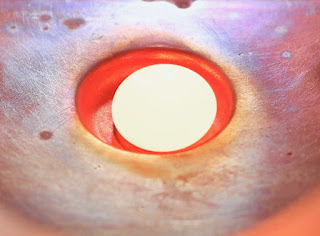New, Smart Materials
Innovation to Increase Jet Fuel Efficiency
Potential to Reduce the Cost of Flying
Texas A&M scientists have developed a group of new, smart materials that could significantly improve the efficiency of fuel burn in jet engines. That has the potential of cutting the cost of flying.
Brand New Materials with Great Potential
The materials could also reduce airplane noise over residential areas. Scientists say there are additional applications in a variety of other industries. They believe they are just scratching the surface of something new that could enable brand new technologies and brand new scientific research. The lead researcher is Dr. Ibrahim Karaman, Chevron Professor and head of the university's Dept. of Materials Science and Engineering.
Smart Metals Changing Shape
The Texas A&M team brought together 2 new areas of materials science involving metal alloys which are metals composed of 2 or more elements. One area involves shape-memory alloys. These are smart metals that can switch back and forth in shape with the trigger of heat. For example, the smart metal changes itself from a straight piece of metal to a twisted one and back to its original form when exposed to heat.
 |
| Photo: Courtesy of Texas A&M |
Potential to Reduce the Cost of Flying
Texas A&M scientists have developed a group of new, smart materials that could significantly improve the efficiency of fuel burn in jet engines. That has the potential of cutting the cost of flying.
Brand New Materials with Great Potential
The materials could also reduce airplane noise over residential areas. Scientists say there are additional applications in a variety of other industries. They believe they are just scratching the surface of something new that could enable brand new technologies and brand new scientific research. The lead researcher is Dr. Ibrahim Karaman, Chevron Professor and head of the university's Dept. of Materials Science and Engineering.
Smart Metals Changing Shape
The Texas A&M team brought together 2 new areas of materials science involving metal alloys which are metals composed of 2 or more elements. One area involves shape-memory alloys. These are smart metals that can switch back and forth in shape with the trigger of heat. For example, the smart metal changes itself from a straight piece of metal to a twisted one and back to its original form when exposed to heat.
%20(1)%20(1)%20(3)%20(2)%20(2).jpg)


Comments
Post a Comment